nalco group
bone, muscle & joint pain physio
BOOK NOW / WHATSAPP ABOUT YOUR PAIN OR INJURY
- ORCHARD 400 Orchard Road #12-12 Singapore 238875
- TAMPINES 9 Tampines Grande #01-20 Singapore 528735
- SERANGOON 265 Serangoon Central Drive #04-269 Singapore 550265
Home > Blog > Physiotherapy > Conditions > Shoulder Pain > Upper Arm Pain Physiotherapy
Upper Arm Pain Physiotherapy
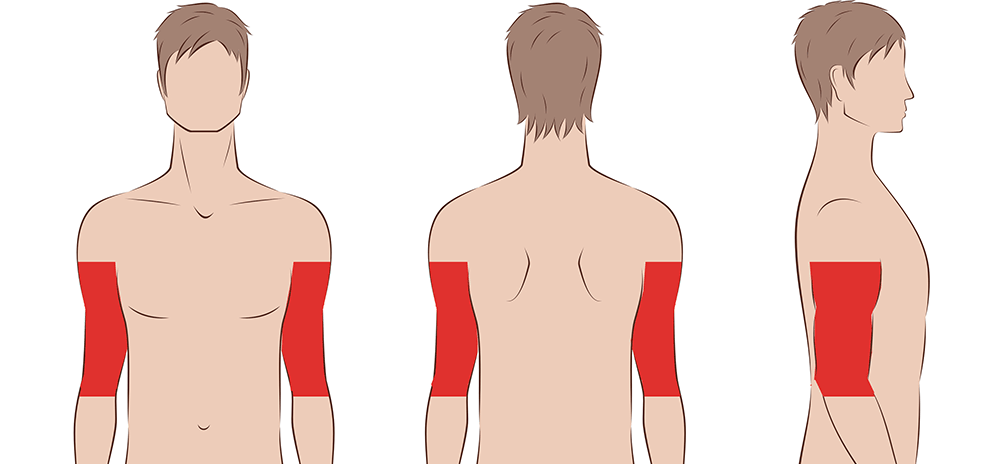
Upper arm pain can be quite vague, as it refers to pain that is felt anywhere from just below the shoulder joint to just above the elbow (the entire upper arm area).
Upper arm pain can be caused by problems in the:
- muscles
- tendons
- bones
- or even referred pain from elsewhere such as the neck or heart
It may be a sign of
- wear and tear
- postural problems or
- an injury
Causes Of Upper Arm Pain
What Is It:
This is a common cause of pain in the upper arm that is typically caused by damage to one of the tendons of the rotator cuff muscles, which refers to a group of muscles that surround the shoulder joint. Their main function is to control the movement and ensure stability of the shoulder and shoulder joint.
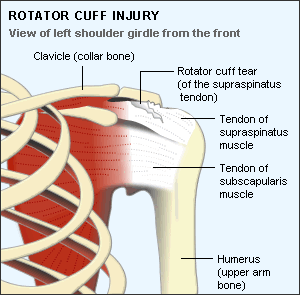
Onset:
Rotator cuff injuries may be caused by gradual use and wear and tear over time from repetitive friction, or it may also occur suddenly with an injury such as falling on to an outstretched arm or picking up something heavy
Symptoms:
Patients typically experience upper arm pain across the shoulder and down the upper arm, usually reporting
- dull ache
- weakness and
- cracking/popping noises when patients move their arm
Aggravating Factors:
- Lying on the affected arm
- Lifting or twisting the affected shoulder in movement
Treatment:
- Patients are medically required to rest from aggravating activities
- Rotator cuff exercises will be prescribed by our senior physiotherapists to strengthen and stretch the shoulder
- Possibly will benefit from steroid injections.
- In very painful bad cases, patients may be advised for corrective surgery
Recovery:
Rotator cuff tears are often slow to heal and it can take a few months to fully recover. If symptoms persist for more than 6 months, surgery may be recommended
2) Fractured Shoulder Or Humerus ie Broken Upper Arm
What Is It:
A fractured shoulder typically refers to a break or crack in the upper arm bone known as a fractured shaft of humerus.
Mild cases can be just a simple small hairline fractures, but more severe ones can be:
- spiral fracture of the humerus
- communited fracture of the humerus into 2, 3 or more pieces
- open fractures where the sharp fractured fragment pierced through the skin
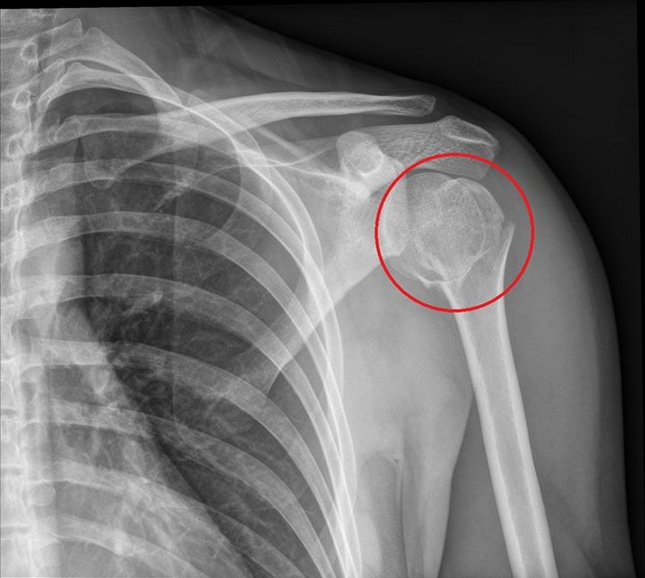
Onset:
Most patients who get this injury is typically because of direct blows or damages to the upper arm, such as in
- sports injuries
- fall on hand or outstretched arm
- road traffic accident
- very strong or severe twisting of the arm with strong contraction (such as in over head or over hand throw in martial arts)
In some rare cases, where the bone has severely weakened due to disease (such as osteoporosis or low bone mass) and cancer, the bone may be very brittle.
Symptoms:
Patients WILL know that they have a bad injury as they will experience severe upper arm pain - typically
- sharp pain
- obvious deformity (if the fracture has displaced there may be a bulge where the bone is out of place)
- shortening of the arm
- bruising
- swelling
- minimal arm movement (most of the time they WONT want to move their arm due to the pain)
Aggravating Factors:
- Any arm movement
- Pressure or force at or over the fracture site
Treatment:
Simple and minor fractures may be treated by immobilizing the arm in a cast for about 4 to 8 weeks. However, complex or major shoulder fractures will require surgery to realign (reduction) the bones and stabilize them back together using either
- metal rod or
- metal plate and screws
Recovery:
Most patients usually takes between 4 to 8 weeks for the bone to grow and stick back together and then another 4 to 8 weeks for it to strengthen.
That being said, for the elderly patients fracture healing is often slower.
Patients will definitely require shoulder physical therapy to regain strength and movement in the arm as shoulder stiffness and weakness is very very common after injuries and especially after a fracture.
Please note that it can take up to a year (yes, up to 12 months or even longer) to fully recover from an arm fracture
What Is It:
Shoulder impingement is a broad general term that refers to any conditions that causes a decrease of the subacromial space in the shoulder.
And this causes an increase of:
- pressure
- friction
- pain
on the rotator cuff tendons and muscles.
It is a common cause of shoulder and upper arm pain affecting approximately 20% of people at some point usually caused by repetitive overhead activities such as
- throwing activities such as cricket, baseball, softball pitchers
- swimming
- aging
- posture
- genetics
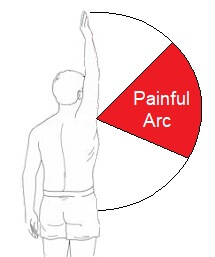
Onset:
- Typically patients experience a "slow and gradual" onset that gets progressively worse over time.
- Most frequently develops in patients who are middle age, between 45 to 65 years old
Symptoms:
- Shoulder and upper arm pain, usually on the outside of the arm which may extend down to the elbow, often described as feeling like deep kind of arm ache, that is similar to tooth ache in nature.
- Painful arc with certain range of shoulder movement (as shown in picture) and of course shoulder weakness.
- Shoulder movement is not usually restricted initially, but over time, shoulder stiffness may develop due to lack of use
Aggravating Activities:
- Reaching and lifting above your head
- Lying on affected side
- Reaching behind your back
- Getting dressed
Treatment:
- Rest from aggravating activities
- Cold therapy
- Rotator cuff exercises to strengthen and stretch the muscles
- Possibly steroid injections
If the impingement is caused by small bone spurs in the subacromial space, patient will likely need to undergo corrective surgery to remove them, known as a subacromial decompression surgery
Recovery:
It can take about 3 to 6 months for upper arm pain to settle with shoulder impingement syndrome, with or without surgery
What is it:
Also known as adhesive encapsulitis, frozen shoulder refers to the thickening and tightening of the joint capsule, which is a fluid filled sac that surrounds our glenohumeral (shoulder) joint
Onset:
Patients typically experience a gradual onset over time (weeks and/or months), and it is most commonly experienced in patients who are between the ages of 40 to 70 and moreso in females compared to males.
Currently the medical and scientific community have not found a direct or obvious cause but it can develop after a shoulder injury or surgery.
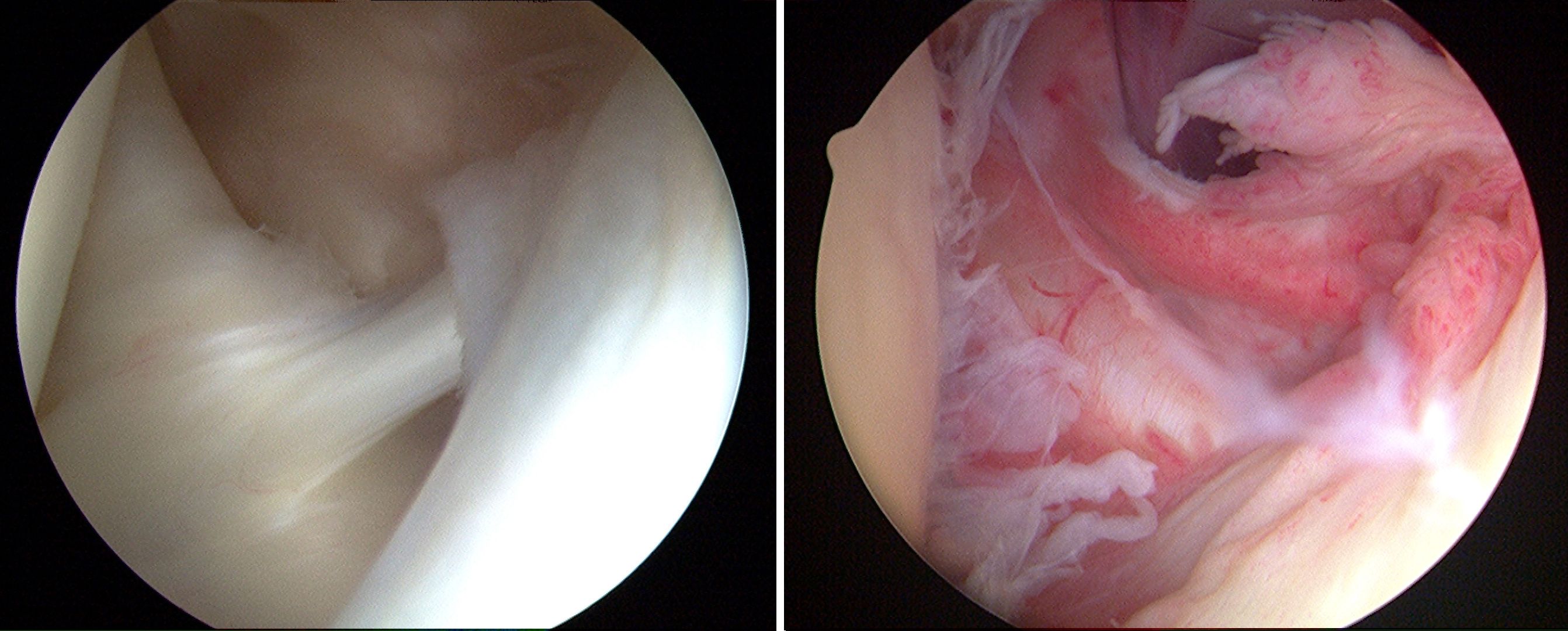
Symptoms:
There are three phases to a frozen shoulder, each with different experiences, pains and symptoms:
- Phase 1: Shoulder and upper arm pain that gets gradually worse
- Phase 2: Increasing restriction of shoulder movement in what is known as a capsular pattern – lateral rotation most limited, then flexion and medial rotation least affected.
- Phase 3: The pain gradually subsides but stiffness remains for a number of months .
The pain is often worse at night
Aggravating Factors:
- Any forms of arm movement, particularly above head height or twisting movements
Treatment:
Initially focuses on pain management e.g.
- shoulder physiotherapy and frozen shoulder physiotherapy
- medication
- steroid injections
Once the pain has settled, a shoulder physiotherapy exercise program is prescribed to patients to strengthen and stretch the shoulder to regain full movement. If symptoms fail to improve after six months, surgery may be recommended (shoulder manipulation under anesthesia)
Recovery:
Unfortunately...it can take up to 2 years to fully recover from a frozen shoulder. Each phase can or will last for a number of months.
5) Biceps Injury (Tendon Rupture)
What is it:
Inflammation and thickening (tendonitis) of the biceps tendon, or a tear, of the long head of biceps tendon. It is often associated with other shoulder problems such as impingement and arthritis.
People who do lots of heavy lifting overhead are at much increased risk of biceps injuries.
Onset:
These kind of injuries may develop
- gradually over time from overuse (natural wear and tear), or
- suddenly with an injury such as a fall or lifting heavy weights
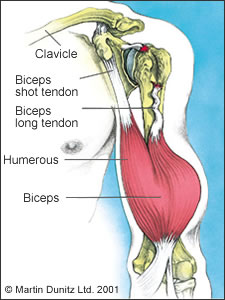
Symptoms:
- Tendonitis – achy upper arm muscle pain, mostly at the front of the shoulder where the tendon is, and especially when the arm is overhead.
- Tendon tear – sudden, sharp upper arm pain, sometimes accompanied by an audible pop, and bruising from the mid upper arm to the elbow. Sometimes if there is full tendon tear, patients may notice that there may be a bulge in the upper arm, known as a “Popeye Muscle”.
The upper arm pain may in both cases extend down to the elbow
Aggravating Factors:
- Heavy lifting, raising your arm above your head
Treatment:
- In the early acute stage: lots of rest, cold therapy, possibly steroid injections and definitely mobilization exercises.
- In persistent cases of tendonitis, or severe tendon tears, patients may require corrective surgery, after which patients will need to wear a sling initially and start seeing our senior physiotherapists for a rehab program of strengthening and stretching exercises
Recovery:
It typically takes between 3 to 6 months to fully recover from a biceps injury
Other Causes Of Upper Arm Pain
In some cases, patients who experience upper arm pain may actually be a symptom of a problem elsewhere:
Heart Problems
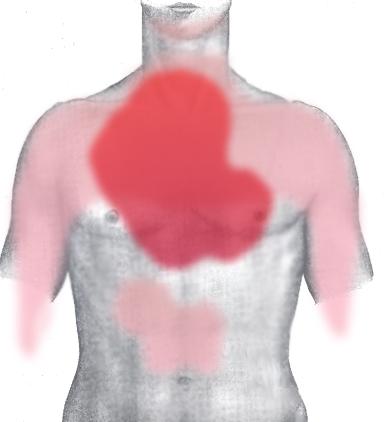
Angina:
- A condition where the blood supply to the heart is restricted which can cause upper arm pain.
- The pain typically gets worse with (stressful and/or exertive) activities and eases with rest
Heart Attack:
Happens when and where a blood clot blocks the blood supply to the heart. This is a medical emergency. If your upper arm pain which is experienced typically in the left arm, is accompanied by
- chest pain (may feel like a squeezing sensation or pressure)
- shortness of breath
- nausea
- light-headedness or
- sweating
call for an ambulance immediately!
Nerve Problems
- Pressure on the nerves that run from the neck across the shoulder and down the arm can cause pain in the upper arm.
- What happens is that our nerves may get pinched where it exits the spine or anywhere along its path which then causes pain and even other abnormal sensations.
- Nerve pain is often accompanied by pins and needles and/or numbness in the arm or burning shoulder pain.
If the pain experienced seems to be moreso across the front of the shoulder and chest, it may indicate a problem with your collarbone - visit our collar bone pain for information to help you work out what is going on.
If it's radiating to the shoulder blades or across your upper back, visit the shoulder blade pain section.
If none of these is sounding quite like your pain, it may be that there is something else going on such as shoulder bursitis or a problem in the shoulder joint itself.
shoulder pain physiotherapy
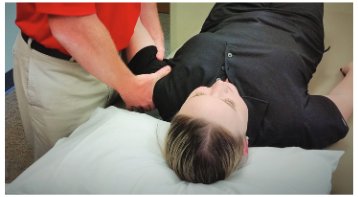
Patients may also receive the following physiotherapy treatment modalities:
- cold therapy
- moist heat paraffin wax therapy
- radio-frequency Indiba physiotherapy to accelerate soft tissue healing
- joint mobilization
- stretching exercises
- strengthening exercises
- scar management
- hands on manipulation and mobilization (manual therapy)
- computerized spinal decompression traction
- soft tissue management
- heat therapy and heat treatment and heat pack to relief tight muscles and joints
- ultrasound therapy to accelerate soft tissue healing
- exercise therapy
- acupuncture and/or dry needling
- deep tissue release
- and more
Reference
